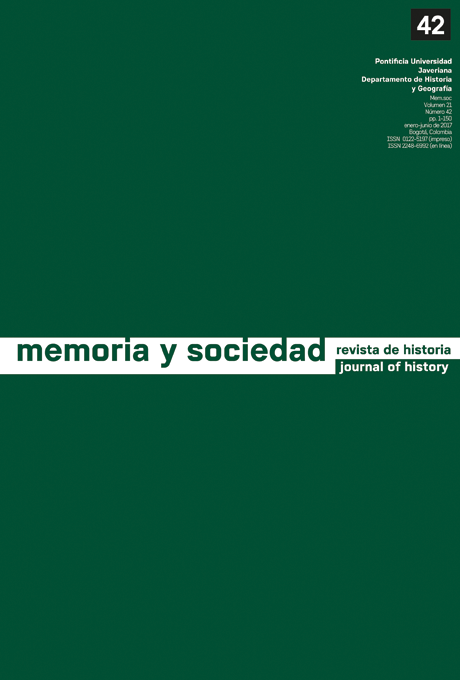Abstract
Gender perspective in the Colombian Caribbean art can be contextualized within the worldwide feminist movement. The comparison is established in the artwork of female artists from this region, as they subvert, demonstrate, and reveal with poignant expressive freedom, not only their intimate concerns, but a whole series of questions to the conditions that have been culturally imposed on women in the Caribbean. They come from two different generations. The first generation, analyzed in this installment, can be defined as the pioneers of gender perspective in Colombian art. The second generation consolidates issues through individual pledges in a diasporic way and increasingly committed to the social women’s movement. Both generations do this through performative, hybrid, visual and audiovisual art. These are avant-garde artists of the visual and performative art in the Colombian Caribbean. We prefer to call them, in both cases, visionaries.
The journal Memoria y Sociedad is registered under a Creative Commons Attribution 4.0 International Public License. Thus, this work may be reproduced, distributed, and publicly shared in digital format, as long as the names of the authors and Pontificia Universidad Javeriana are acknowledged. Others are allowed to quote, adapt, transform, auto-archive, republish, and create based on this material, for any purpose (even commercial ones), provided the authorship is duly acknowledged, a link to the original work is provided, and it is specified if changes have been made. Pontificia Universidad Javeriana does not hold the rights of published works and the authors are solely responsible for the contents of their works; they keep the moral, intellectual, privacy, and publicity rights.
Approving the intervention of the work (review, copy-editing, translation, layout) and the following outreach, are granted through an use license and not through an assignment of rights. This means the journal and Pontificia Universidad Javeriana cannot be held responsible for any ethical malpractice by the authors. As a consequence of the protection granted by the use license, the journal is not required to publish recantations or modify information already published, unless the errata stems from the editorial management process. Publishing contents in this journal does not generate royalties for contributors.

